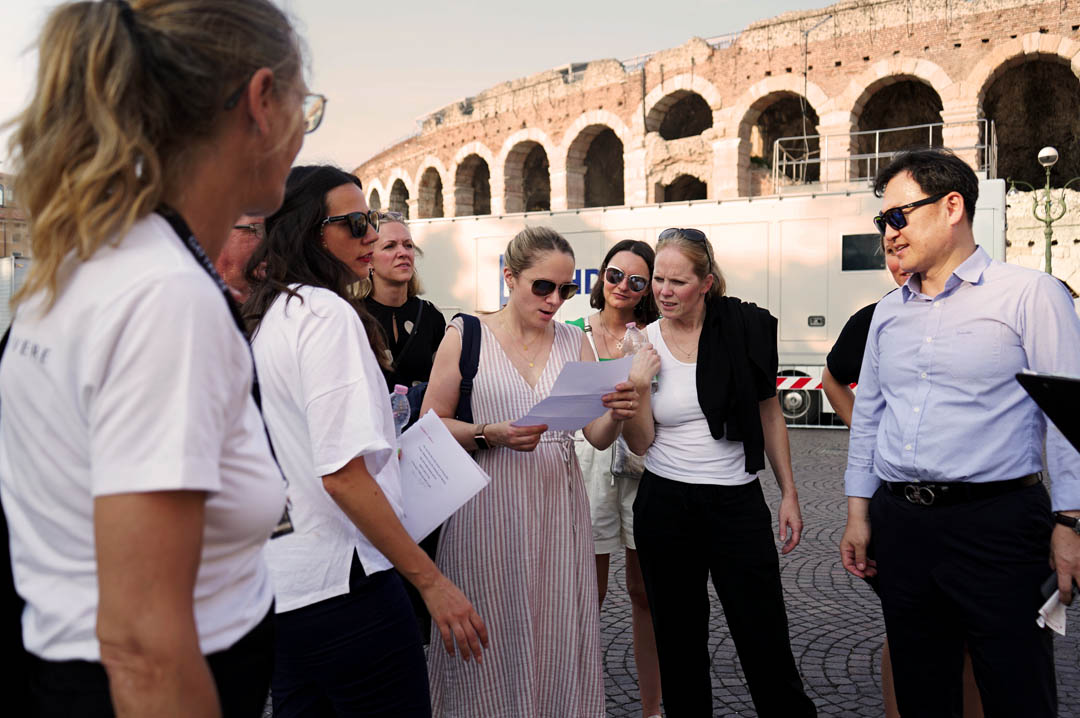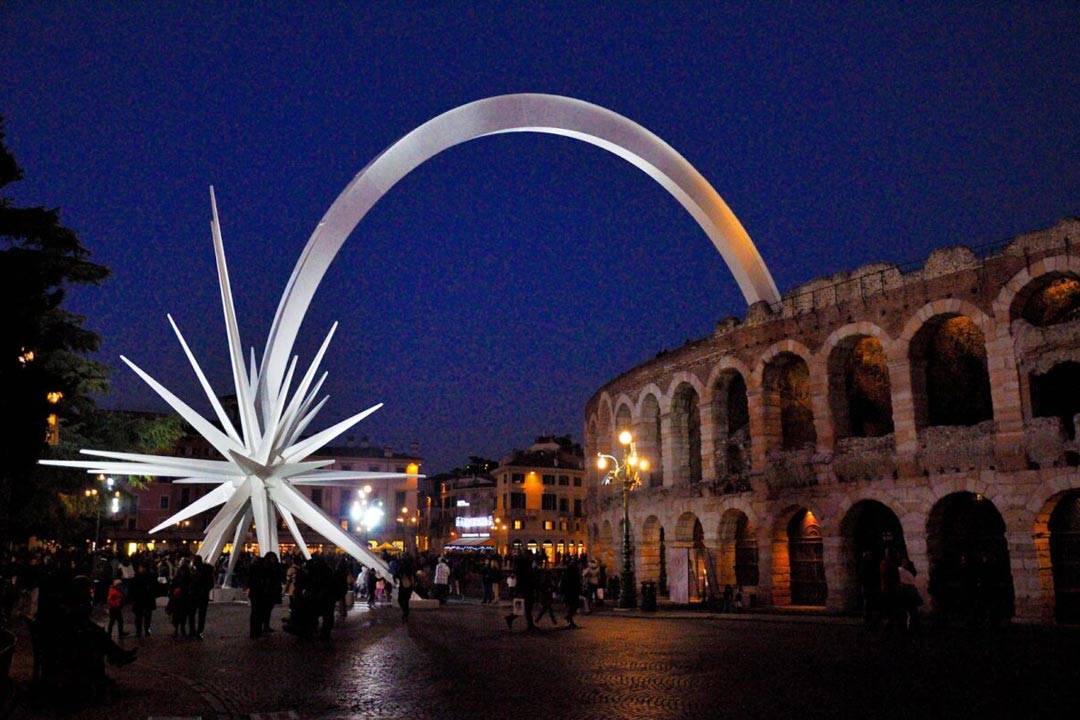Verona is a city dripping with romance and allure, famous for Romeo and Juliet’s love story. But beyond the tourist hotspots, there’s a treasure trove of lesser-known streets waiting to be discovered.
In this blog post, we’ll take you on a journey through Verona’s offbeat and enchanting streets that are sure to captivate your senses. Thanks to @ilmioviaggioaverona for the blog post inspiration. We strongly advice to give them a follow on Instagram!
Are you ready to discover the unusual streets of Verona? Let’s get started.
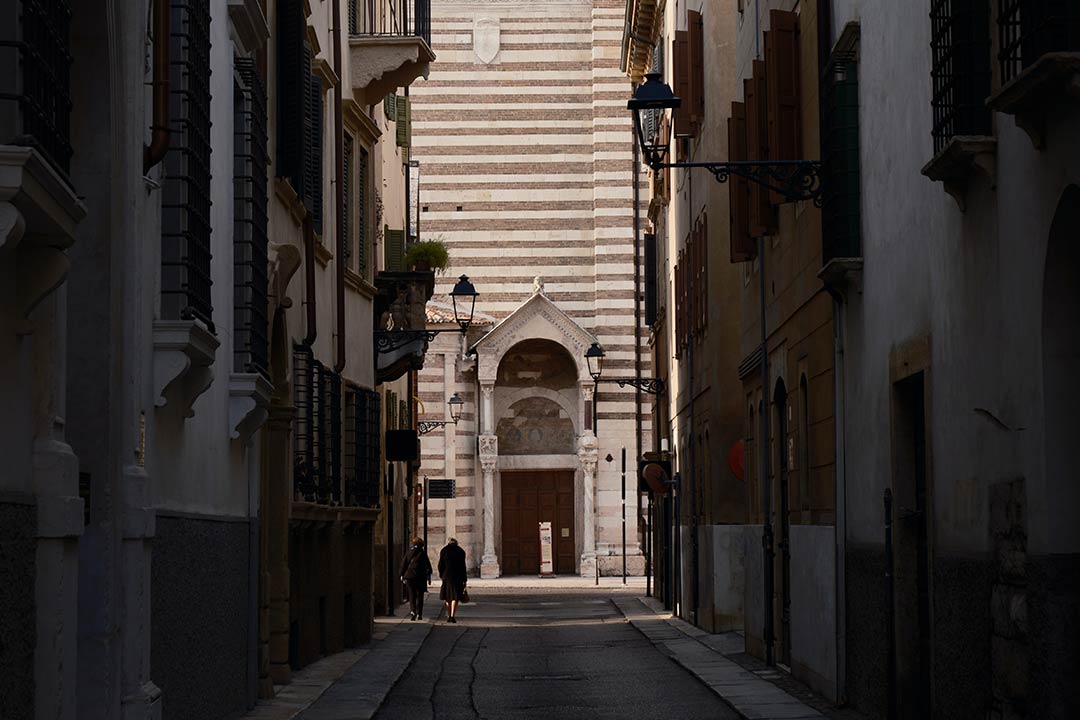
1. Corso Cavour
Corso Cavour is the stretch of road that connects Castelvecchio with Porta Borsari. It was named after Camillo Benso Count of Cavour by the Verona City Council on 21 January 1867, and follows a section of the suburban layout of Via Postumia. Along Corso Cavour we meet the statue of the Veronese Aleardo Aleardi and, further on on the right, stands one of the most significant buildings in Verona, Palazzo Canossa. The “Allegories” are placed on the top of its richly decorated facade. Proceeding you can admire Castelvecchio and on the opposite side the equestrian statue of Camillo Benso di Cavour.
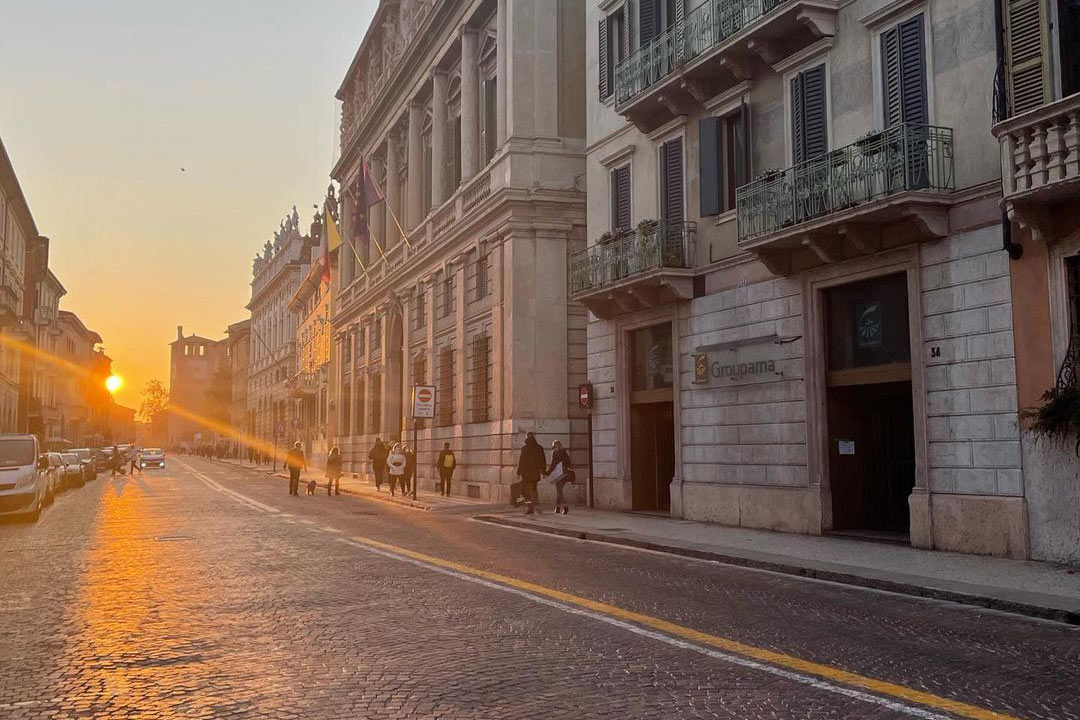
2. Via Sottoriva
Via Sottoriva is one of the most characteristic streets of the ancient city, where it is possible to glimpse the nature of a late medieval Verona. The street is located near the Adige and, as the name suggests, in ancient times it was even at the level of the river. It was separated from it only by an embankment which served as a precarious defense from the waters and, above all, as a support for those who worked on the mills that occupied the course of the Adige. The river bank was connected to the road by a series of vò, a dialectal name that indicates the narrow alleys that wedged into the houses facing the river.
Due to its extreme proximity to the water and the precariousness of the embankment, the street was submerged at every flood of the Adige: the signs of the level reached by the river during the devastating flood of 1882 are still visible on the walls of its houses. Following this event, the city took important urban planning measures, including the raising of the embankments which, together with the progressive abandonment of the mills, significantly changed the appearance of via Sottoriva.
Despite this, it has remained one of the most “unusual” streets in the city, especially thanks to the suggestive portico that accompanies the left side and the thirteenth-fourteenth-century houses. One of these ancient houses belonged to the “Montesilice” family, one of whose daughters, Esterina, became the wife of Pietro III degli Alighieri, a direct descendant of the famous Dante Alighieri.
Curiosity: During the Middle Ages the street was part of the district called “Chiavica” while, during the French domination of the city, it was part of the “Piazze” district.
Second curiosity: when in 1797 the French introduced civic numbering in the city, the first road to benefit from it was precisely via Sottoriva. Here therefore, at the height of the current number 52, Verona had its first house number.
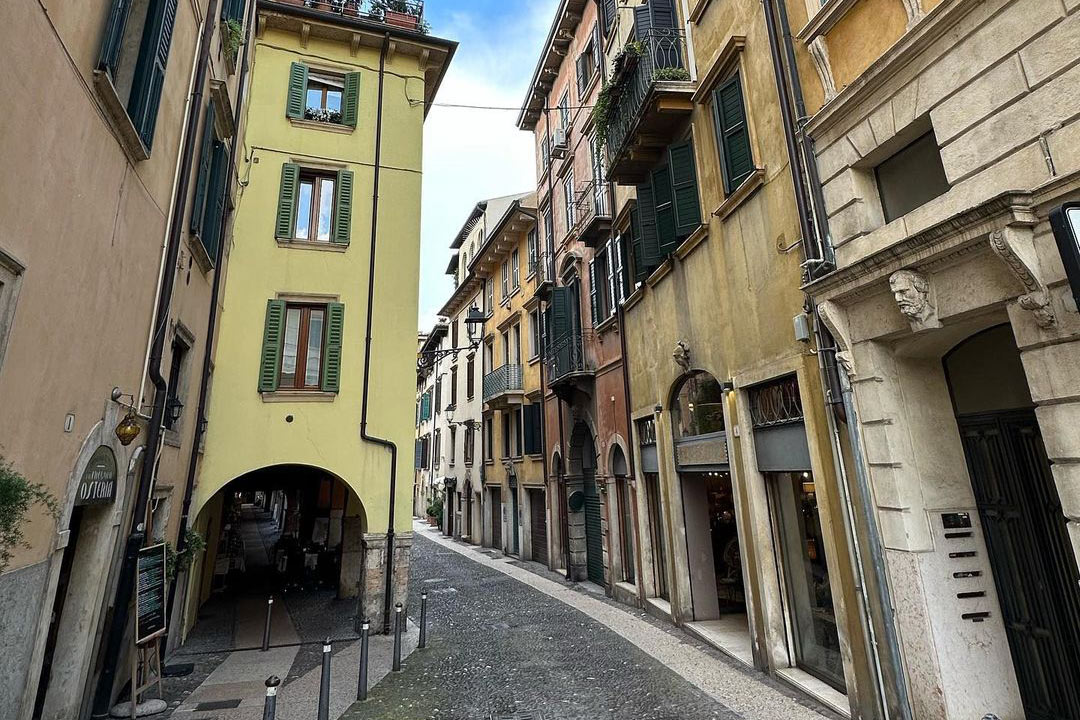
3. Corso Porta Borsari
Corso Porta Borsari is an elegant pedestrian street in the historic centre, which joins Piazza delle Erbe with the ancient Porta Borsari. It follows the layout of the Decumanus Maximus, which in Roman times was one of the main city arteries, which met the Cardo Maximus at the height of the Forum. The term corso dates back to the Middle Ages, as does the name of the Borsàri (“bursàrii”), i.e. the people in charge of collecting duties on goods in transit through the port. In the course you can find highly sought-after shops, clubs and hotels. A real point of reference, as regards shopping and everyday life in Verona.
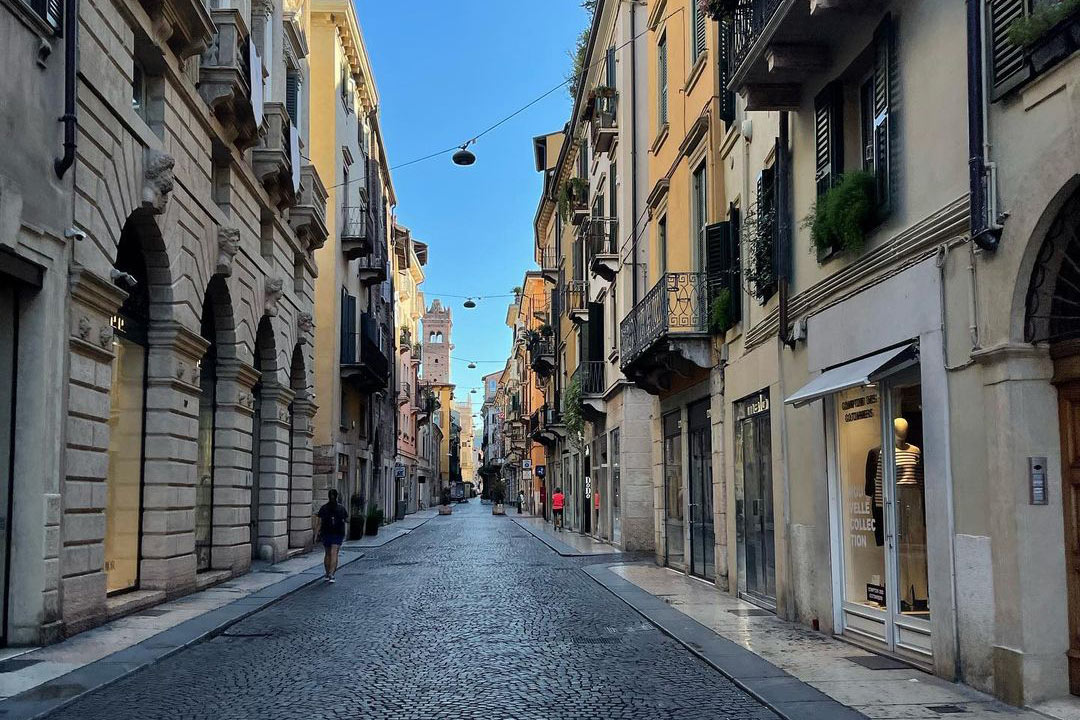
4. Buso del Gato
Buso del Gato is an underground passage that begins in Porto San Pancrazio, passing exactly between the houses and under the tracks. A bizarre and significant name due to its popular history, which hides somewhat fairy-tale anecdotes. Today it serves as a link between the neighborhood and the Porta Vescovo station. Its origin can be placed in 1849 when it became a narrow pedestrian passage, planned by the Austrians in 1849, under the railway inaugurated that year. The original name was “Busegato” that is gut, long, narrow and dark passage, altered almost immediately into Buso del Gato due to the influence of the Veronese dialect which means cat flap, or the classic hole in the door to let the cats go back and forth.
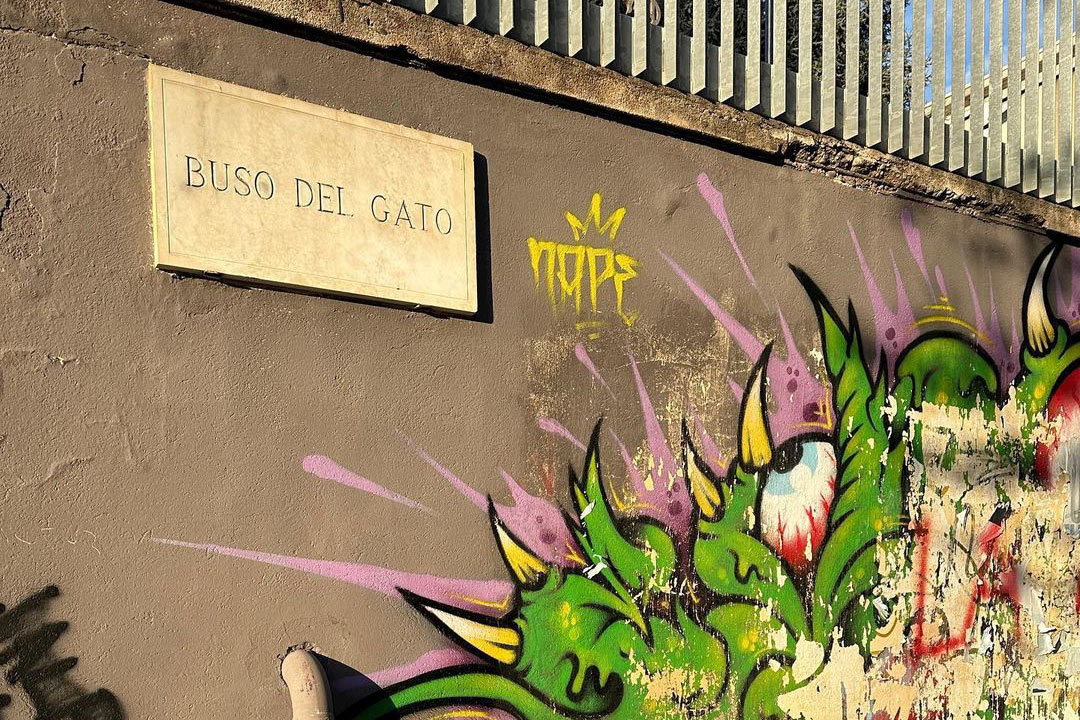
5. Vicolo Cieco Agnello
Vicolo Cieco Agnello is a narrow and charming street in the heart of Verona, Italy, that offers a glimpse of the city’s history and culture. The street is home to Art & Coffee Verona, a cozy and elegant bed and breakfast located in a 16th century building that features antique furniture and a delicious breakfast. This is the perfect place to stay and explore Verona, a city that combines history, beauty, and gastronomy. When you walk here, at the end of the street, on the right, look down. You will find an unusual work of street art… maybe Banksy?
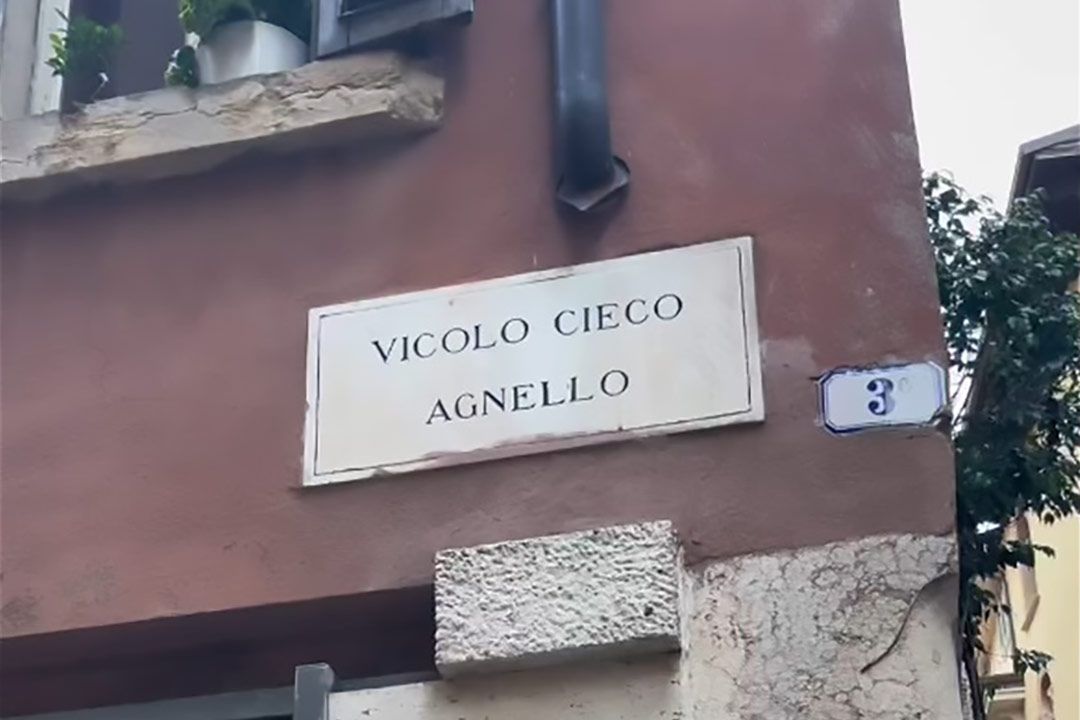
6. Via Trota
Via Trota is a small street of just 100 meters, which goes from Piazzetta Chiavica to via Ponte Nuovo. And one of the many streets of Verona, rich in history.
During the works of the large drainage collector on the right side of the Adige, which began in 1890, an ancient Roman road was found and on November 18, 1891 (3 meters below the ground) a bronze coin of Faustina, wife of Marcus Aurelius. 35 years earlier, on June 6, 1855, the cholera epidemic that devastated Verona began right here (with the death of an attendant of the Albergo della Trota). And it is particular that the very house at the beginning of this street (which separates it from via Sottoriva) had on the first floor, now illegible, a remarkable painting with San Rocco, protector of plague victims: it was the “Deposition of Christ, supported by Sant’Antonio Abate e da S.Rocco” which bears the signature of M.A. Serafini and the date 1551. At number 12, a beautiful late 19th century building displays a medallion dedicated to Georges Cuvier, the founding father of paleontology, who was the first to identify a pterosaur which he called Ptero-Dactyle in 1809. Many other stories could be told about this street which leads to Piazzetta Pescheria, but it is nice to note that still an old restaurant (since 1967) shows a trout in the sign.
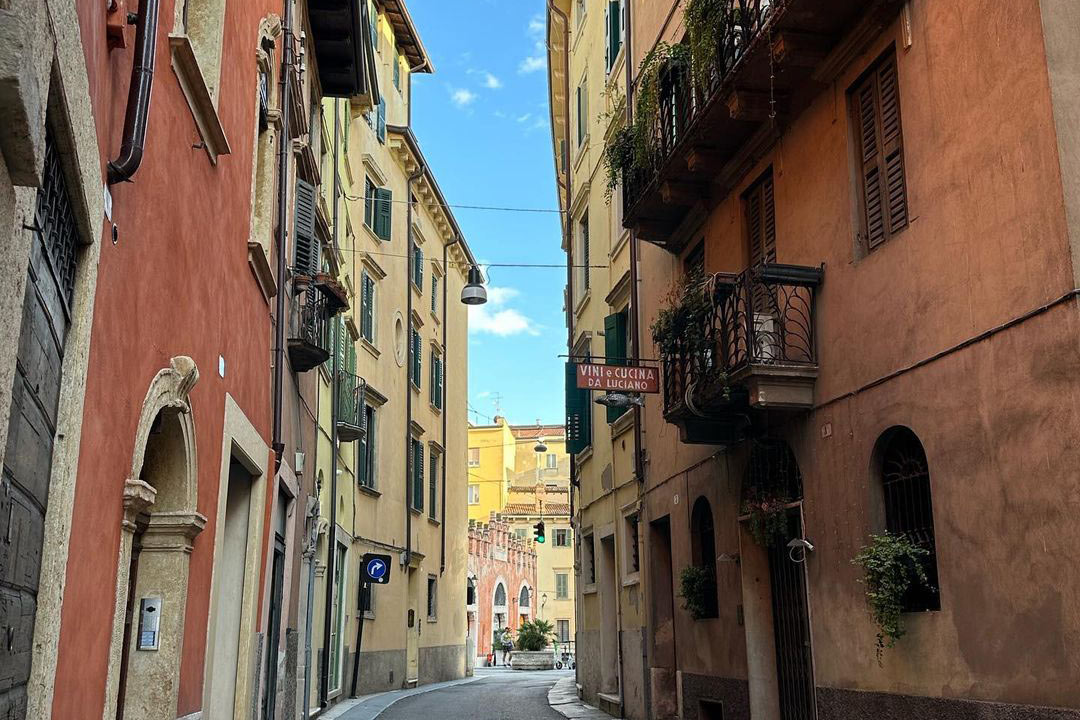
7. Vicolo Derelitti
Vicolo Derelitti, a few steps from Ponte Pietra, owes its name to a 16th century orphanage. In fact, the alley owes its singular name to an institution of assistance from Cardinal Agostino Valier, then bishop of Verona, to welcome and educate orphaned and homeless children.
In 1871 the structure was renamed “Collegio Artigianelli” on the initiative of the Municipality of Verona which, with the collaboration of the Chamber of Commerce, decided to develop a project to introduce young people without families and children of poor parents to arts and crafts. In fact, the immediate proximity to the Coalmen’s district, where there were already since the mid-sixteenth century warehouses and coal deposits, as well as sales shops, could materialize in employment opportunities for young apprentices. The complex was then converted into the “Istituto Fanciulli Derelitti” in 1913 and finally became part of the assets of the Berto Barbarani Foundation, established in 1942 with the aim of contributing to the professional training of minors in need.
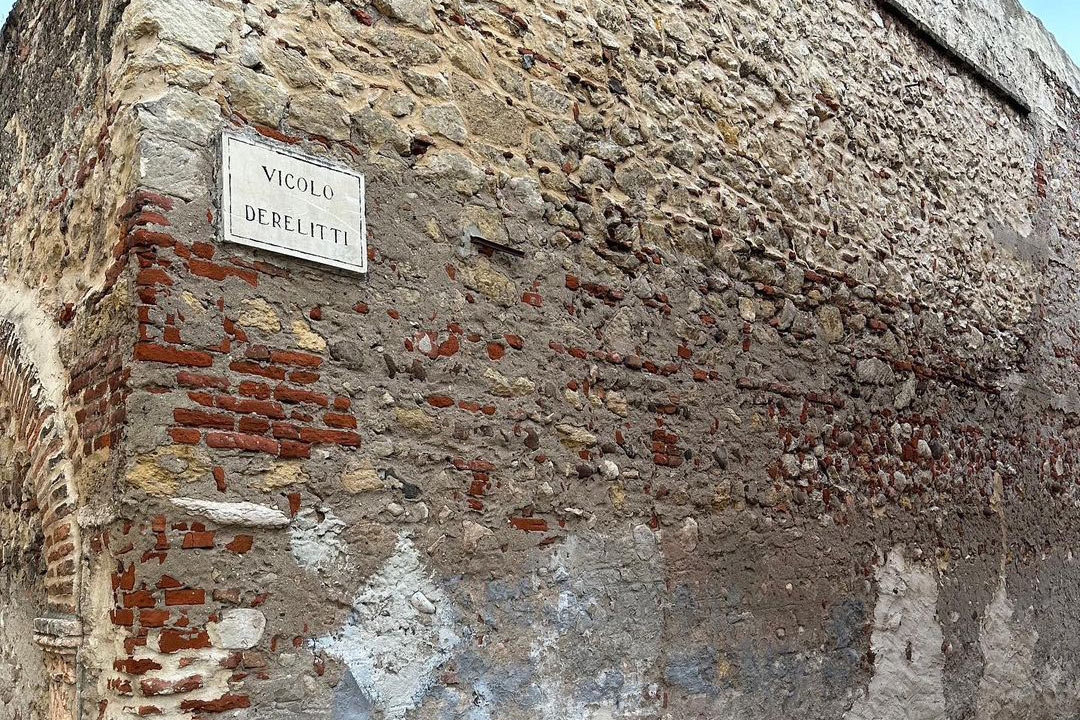
Conclusion
Verona is a city that will enchant you with its history, culture, and romance. Whether you are a fan of Shakespeare or not, you will find plenty of reasons to fall in love with this city and its unusual streets.
In this article, we have explored just 7 of the most interesting and unique streets in Verona, each with its own story and charm. So don’t wait any longer and book your trip to this wonderful city.
You will discover that Verona offers a lot of things to do in Verona and is much more than just a setting for a tragic love story. It is a place where you can create your own unforgettable memories.

